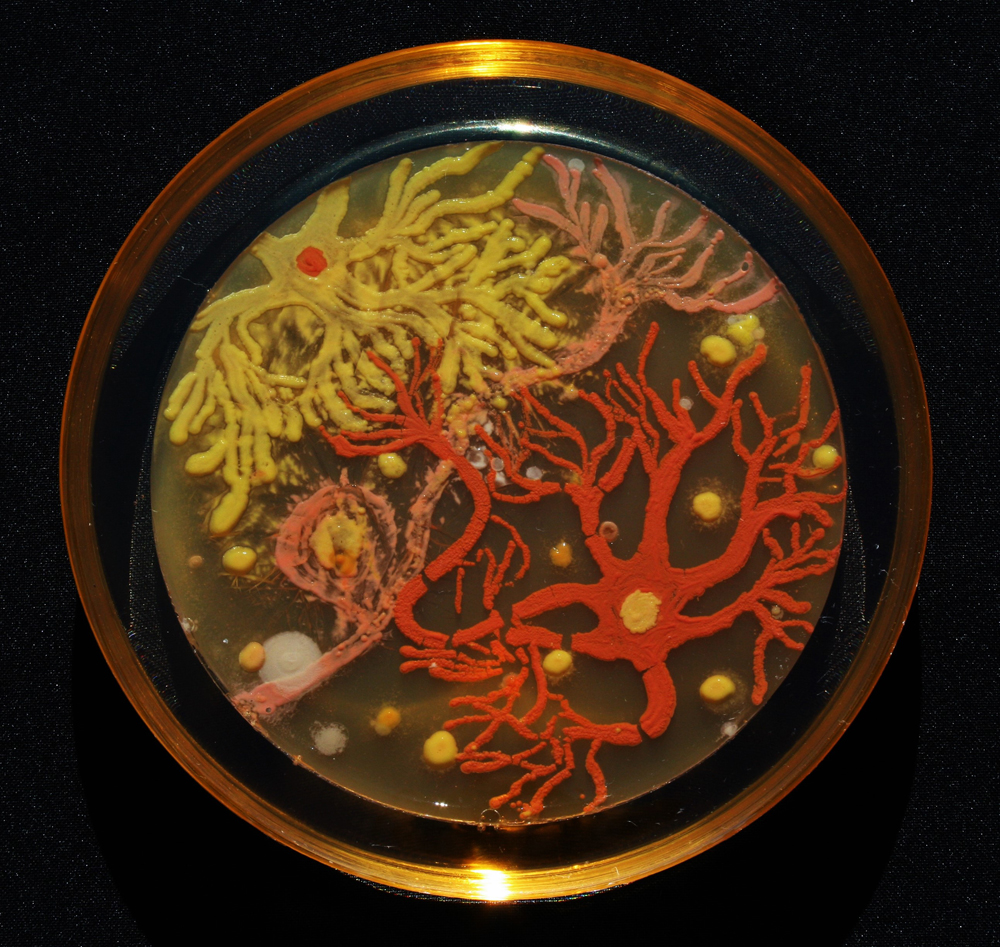Microbe Masterpieces: Scientists Create Cool Art from Bacteria

What do Vincent van Gogh's painting "The Starry Night," a map of New York City and a countryside harvest landscape have in common? Perhaps not much, but all of these images can be re-created by growing colorful microbes in petri dishes — and they were for this year's Agar Art Contest, an unusual annual competition sponsored by the American Society for Microbiology.
For the contest, creative microbiologists were encouraged to submit a piece of art using bacterial or yeast colonies as paint, and agar (a gelatinous substance used to grow cultures) as a canvas. There were 85 entries in total, and the winning creations were recently on September 29.
First place went to Mehmet Berkmen of New England Biolabs, who worked with artist Maria Penil to create piece called "Neurons." The petri dish was painted to look like nerve cells using the yellow-tinged bacteria called Nesterenkonia and the orange-colored bacteria called Deinococcus and Sphingomonas. [In Photos: The Microbe Masterpieces of the 2015 Agar Art Competition]
To keep the contents of their petri dishes looking artistic, Berkmen and Penil allowed bacteria to grow inside the dish for a few days at a stable temperature, but then they sealed the masterpiece with epoxy, cutting off the oxygen that aerobic bacteria need to grow, and preserving the artwork.
The second place winners made a "microbial map" of New York City. The art was made by Christine Marizzi, a community educator who worked with citizen scientists and artists at Genspace: New York City's Community Biolab, using a harmless strand of Escherichia coli bacteria. These microbes were tinted with proteins, giving the map its colorful appearance.
A more pastoral landscape also grabbed judges' attention, and the third place slot in the contest. The "Harvest Season" piece features the green, yellow and red hues of Saccharomyces cerevisiae, a species of yeast. The autumnal entry, which depicts a farmhouse surrounded by wheat fields, was submitted by Maria Eugenia Inda, a postdoctoral researcher from Argentina who works at Cold Spring Harbor Labs in New York.
Other notable entries to the contest included the work of Melanie Sullivan, a microbiologist in Missouri, who submitted a striking copy of Van Gogh's masterpiece "The Starry Night." Nicola Fawcett of England used gut bacteria to create her aptly named entry "The Wild Garden of the Gut Bacteria" (which sounds much more disgusting than it looks).
Get the world’s most fascinating discoveries delivered straight to your inbox.
You can take a look at all of the Agar Art Contest entries on the American Society for Microbiology's Facebook page.
Follow Elizabeth Palermo @techEpalermo. Follow Live Science @livescience, Facebook & Google+. Original article on Live Science.


